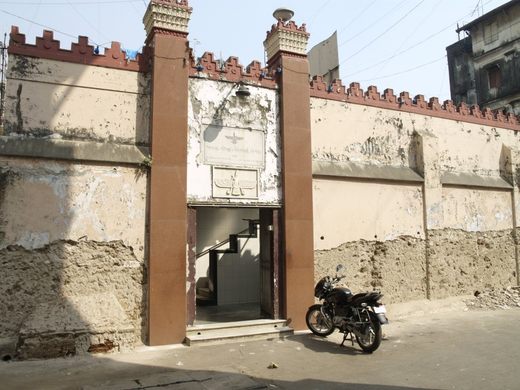Mumbai's Parsi Fire Temples
The place of worship for Zoroastrians, Mumbai's Parsi fire temples use fire and ash for purification.
Zoroastrian is one of the world’s oldest religions, and Zoroastrians—often called dar-e mehr in Persian–the religion’s worshippers. One unique aspect of the Zoroastrian religion is the use of fire in their temples, which are seen as symbolic of the divinity.
With only 27 fire temples found outside of India, the highest concentration of fire temples can be found in Mumbai.
During the Arab conquest of Persia, Zoroastrians fled to India’s Gujarat and Pakistan’s Sindh regions in an effort to preserve their religion. The 18th century saw Parsis—descendents of the Iranian Zoroastrians—settle in Kolkata and other parts of India, primarily as a response to open commerce with the East India Company. From the 18th century onward, Mumbai became the religious center and headquarters for Parsis and their fire temples.
The Parsi population in Mumbai is the largest in India and have influenced arts, politics, and culture in Mumbai and greater India for centuries.
The Fort business district in Mumbai, named to reflect the area around Fort George built by the East India Company, is in between the Victoria Terminus in the north and Kala Ghoda (the Blackstone statue of King Edward II) in the south. The area is home to the Seth Banaji Limji Agiary, a Zoroastrian Fire Temple which is the oldest surviving one in Mumbai.
According to historical records, fire from a lightning strike was maintained by a priest in the home of Mehrwanji Limji, a successful businessman in Kolkata for two years before being transported with Zoroastrian rites to Mumbai. The Mumbai Agiary was established in 1709 by Limji, who brought the fire from Mumbai to initiate the temple and its sacred fire.
Only the high external walls are accessible to non-Parsis. The architecture of the temple resembles that of a fortress, with fire motifs on the front façade. In 1803, a fire broke out in Fort district, destroying most of the temple, but was rebuilt in 1845 by the city’s Parsi community.
Know Before You Go
All Parsi temples are places of worship for Parsis only. While entry to the front gates is allowed for non-Parsis, it is forbidden to enter inner sanctuaries for non-Parsis. The Parsi Fire Temple is located at Perin Nariman St, while the oldest Fire Temple can be found on Banaji Lane behind Flora Fountain, all in the Fort district of Mumbai.
Community Contributors
Added by
Edited by
Plan Your Trip
The Atlas Obscura Podcast is Back!















Follow us on Twitter to get the latest on the world's hidden wonders.
Like us on Facebook to get the latest on the world's hidden wonders.
Follow us on Twitter Like us on Facebook